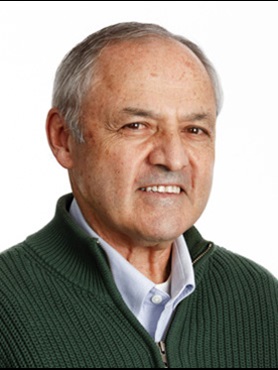Each year, 300 to 500 million cases of malaria are reported, and more than a million people die from the disease. Primarily a problem in tropical areas of developing countries, malaria is caused by mosquito-borne protozoan parasites of the genus Plasmodium, notably P. falciparum. The protozoan invades erythrocytes (red blood cells), which are then destroyed by natural killer (NK) cells of the host's immune system. Although candidate malaria vaccines are undergoing trials, no proven vaccine against malaria currently exists, and antimalarial drugs are expensive and therefore unavailable to many of the disease's victims. Laboratory mice have been the most important non-human models for studying the pathogenesis of malaria and for developing antimalarial therapies. In 2009, a research team headed by Dr. Inigo Angulo-Barturen of the Spanish division of GlaxoSmithKline, including Professor Leonard Shultz of The Jackson Laboratory reported that JAX® Mice strain NOD.Cg-Prkdcscid Il2rgtm1Wjl/SzJ, 005557, abbreviated NSG for NOD scid gamma, a NOD scid strain with a null mutation of the interleukin 2 receptor gamma (IL2rg) chain, is an improved model for developing antimalarial drugs and may accelerate the development of an antimalarial vaccine (Jimenez-D’az et al. 2009).
The fight against malaria
Antimalarial therapies and the development of an antimalarial vaccine are key to eradicating malaria. Typically, candidate drugs and vaccines are tested in mouse models. Because malaria's pathogenesis is complex and P. falciparum almost exclusively attacks human erythrocytes (hE), constructing appropriate mouse models is expensive and challenging. However, they are the only non-human models available for studying P. falciparum's biology inside hE. In the initial stages of clinical trials, candidate drugs are tested against mouse-adapted plasmodial species in mouse immune systems. In later stages, they are tested against human-competent P. falciparum strains in mouse models engrafted with hE.
To date, two different mouse models have been developed. In the first, toxic chemicals and antibodies are used to deplete phagocytic cells and natural killer (NK) cells in immunodeficient mice engrafted with hE. However, the parasitemia in such models is variable, and the regimens used to deplete the mouse's NK cells may affect drug efficacy or effector cells. In the second model, NOD scid mice genetically deficient in beta-2 microglobulin (NOD.Cg-Prkdcscid B2mtm1Unc/J, 002570, abbreviated NOD scid B2mnull) engrafted with hE are infected with P. falciparum strains that can grow in hE-engrafted immunodeficient mice. However, NOD scid B2mnull mice retain some NK cell activity and some innate immune function, both of which limit the severity of a parasite infection in these mice. Additionally, NOD scid B2mnull mice die early from thymic lymphomas, which prevent long-term experiments with these mice.
The NSG advantage

To identify a more effective malaria model, Dr. Angulo-Barturen's research team explored the possibility of using the NSG mouse. Professor Shultz, who developed the NSG mouse at The Jackson Laboratory, visited the GlaxoSmithKline facility in Tres Contos, Spain, and discussed with their scientists the potential of the NSG mouse in malaria research. The NSG mouse lacks fully mature NK cells, retains considerably less innate immune function than the NOD scid B2mnull mouse, and is resistant to thymic lymphoma. Furthermore, it has a superior ability to engraft human hematopoietic stem and peripheral blood cells and can virtually develop a human immune system (Shultz et al. 2005).
After agreeing that NSG might indeed be an improved mouse model for developing antimalarial therapies, the team proceeded with their research. They found that the NSG mouse is just as reliable as the NOD scid B2mnull mouse for evaluating antimalarial compounds in vivo.
In fact, it has three advantages over the NOD scid B2mnull mouse. First, it lives longer and is therefore more amenable to long-term experiments. Second, it is up to 10 times more susceptible to infection by human-competent P. falciparum than the NOD scid B2mnull mouse, greatly increasing its utility in testing the efficacy of antimalarial compounds. For example, the maximum infectious burden in NSG mice infected with human-competent P. falciparum is close to the lowest circulating parasite burden the World Health Organization allows for patients included in clinical trials. Third, the NSG mouse's ability to develop a human immune system increases its utility for developing an antimalarial vaccine.
The findings by Dr. Angulo-Barturen's team offer hope to the millions of people who suffer from malaria. This research will facilitate the discovery of new antimalarial drugs, the development of an effective malaria vaccine and the eventual eradication of malaria.
References
(Author in bold is a Jackson Laboratory scientist.)
Jimenez-D’az MB, Mulet T, Viera S, Gomez V, Garuti H, Ibanez J, Alvarez-Doval A, Shultz LD, Martinez A, Gargallo-Viola D, Angulo-Barturen I. 2009. Improved murine model of malaria using Plasmodium falciparum competent strains and non-myelodepleted NOD-scid IL2Rgamma null mice engrafted with human erythrocytes. Antimicrob Agents Chemother 53:4533-6.
Shultz LD, Lyons BL, Burzenski LM, Gott B, Chen X, Chaleff S, Kotb M, Gillies SD, King M, Mangada J, Greiner DL, Handgretinger R. 2005. Human lymphoid and myeloid cell development in NOD/LtSz-scid IL2R gamma null mice engrafted with mobilized human hemopoietic stem cells. J Immunol 174:6477-89.